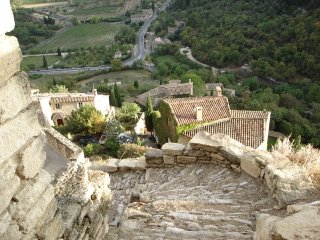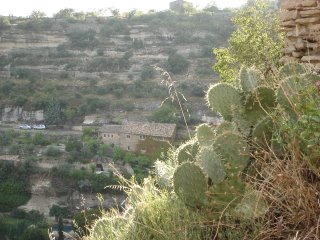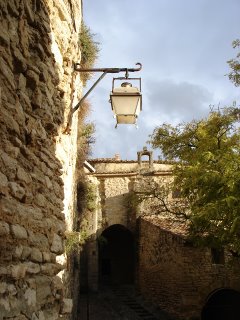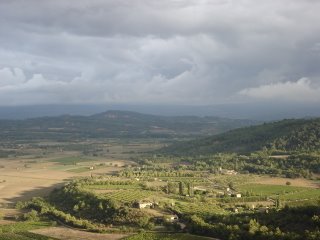It's Hard Out Here for a Pope
 Yeah, no new content for a week--I've been putting in late nights at work, with two projects coming to deadline at once. I got through it, though, and next week starts the Toussaints (All Saint's Day) holiday in France, which serves as an excuse for a weeklong fall break for schools. So with Boog out of school, I'm going to take a few days off next week so we can go up to Vezelay, a hilltop village in Burgundy with an 8th-century basilica that (allegedly) holds relics of Mary Magdalene. How did chunks of a saint allegedly get from Jerusalem to backwoods France 1200 years ago? Long story.
Yeah, no new content for a week--I've been putting in late nights at work, with two projects coming to deadline at once. I got through it, though, and next week starts the Toussaints (All Saint's Day) holiday in France, which serves as an excuse for a weeklong fall break for schools. So with Boog out of school, I'm going to take a few days off next week so we can go up to Vezelay, a hilltop village in Burgundy with an 8th-century basilica that (allegedly) holds relics of Mary Magdalene. How did chunks of a saint allegedly get from Jerusalem to backwoods France 1200 years ago? Long story. Anyway, I never got around to posting some photos of our day trip down to Provence. So here you go. Avignon is the largest town in Provence, and serves as a gateway to the small towns, hills, and lavender fields that give rise to romantic fantasies and Peter Mayle novels. If you remember your Western Civ 101, it was also the site of the papal seat during the 14th-century Avignon papacy, when things got a little hairy in Rome. So Avignon is a fortified town with an elaborate papal palace, in addition to the famous bridge (first pic).
Anyway, I never got around to posting some photos of our day trip down to Provence. So here you go. Avignon is the largest town in Provence, and serves as a gateway to the small towns, hills, and lavender fields that give rise to romantic fantasies and Peter Mayle novels. If you remember your Western Civ 101, it was also the site of the papal seat during the 14th-century Avignon papacy, when things got a little hairy in Rome. So Avignon is a fortified town with an elaborate papal palace, in addition to the famous bridge (first pic).Jam-packed with tourists, too. I do my best not to be grouped as one of these, but when I'm schlepping around some historic site or another with my camera and Lonely Planet guide, it's hard to maintain that my apartment in Lyon qualifies me as a local. I was buying an absinthe spoon (more on that in a later post) in a shop just off the Avignon palace square when the shopkeeper asked where I was from.
"Um, I live in Lyon."

 "Your accent is not quite Lyonnais," she said with a laugh.
"Your accent is not quite Lyonnais," she said with a laugh. We left Avignon and headed east into the Luberon region of Provence, where the temperate flora and fauna and green hills of central France give way to Mediterranean scrub and bright sun.
We left Avignon and headed east into the Luberon region of Provence, where the temperate flora and fauna and green hills of central France give way to Mediterranean scrub and bright sun.Gordes is a small town built rather spectacularly on the top and sides of a very steep hill. Approaching from the valley, it has something of the appearance of an Anas
 azi cliff dwelling. After nearly becoming a ghost town in the early 20th century, it became something of an enclave for artist types and wealthy Britons. That hasn't led to extensive exploitation, fortunately, though we heard more people speaking English here than anywhere else we've been in France so far.
azi cliff dwelling. After nearly becoming a ghost town in the early 20th century, it became something of an enclave for artist types and wealthy Britons. That hasn't led to extensive exploitation, fortunately, though we heard more people speaking English here than anywhere else we've been in France so far.Like a number of the villages we've been to here, there is the problem of where to point the camera to capture the overall charm of a place with no obvious "hey, look at this" focal point. Hence lots of pictures of "some houses" or "a street".
Thus presented here without additional comment. I've also just been handed a crying baby.




0 Comments:
Post a Comment
<< Home